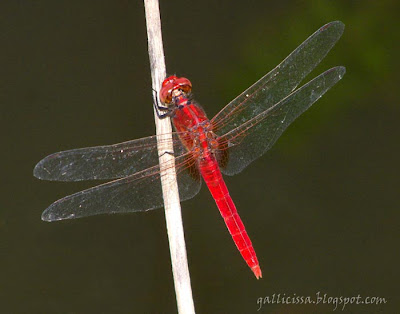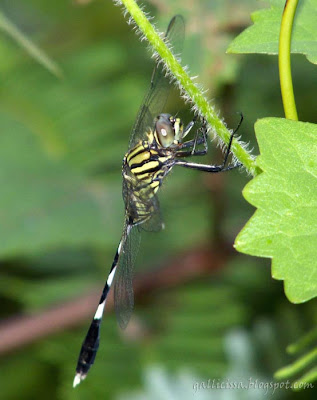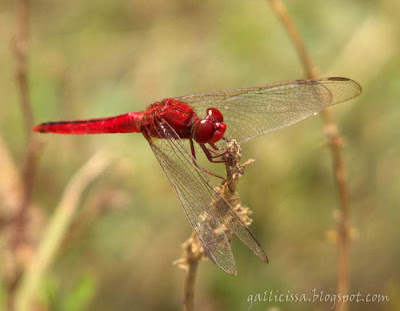Here are some of our trip highlights.
Variable Flutterer Rhyothemis variegata variegata female

Sri Lanka Rock Frog Nannophrys ceylonensis
 Spine-legged Redbolt Rhodothemis rufa male
Spine-legged Redbolt Rhodothemis rufa male  Leopard Phalanta phalantha
Leopard Phalanta phalantha  Buddhist monks at Bodhinagala thanks to whom the forest has been spared from logging.
Buddhist monks at Bodhinagala thanks to whom the forest has been spared from logging. Green Skimmer Orthetrum sabina sabina
Green Skimmer Orthetrum sabina sabina  Asian Groundling Brachythemis contaminata female
Asian Groundling Brachythemis contaminata female Oriental Scarlet aka. Scarlet Skimmer Crocothemis servilia servilia male
Oriental Scarlet aka. Scarlet Skimmer Crocothemis servilia servilia male 
We also found two more dragonflies in the form of Wall’s Grappletail and Pied Parasol.
Birding highlights: Chestnut-headed Bee-eater, Sri Lanka Grey Hornbill (lots), Yellow-browed Bulbul, Black-capped Bulbul, Sri Lanka Crested Drongo, Black-naped Monarch, Indian Swiftlet, Sri Lanka Swallow, Crested Treeswift, Green
A Green-billed Coucal was heard and we didn’t bother as we had exceptional views of it at Sinharaja.
Our mammal highlights included Toque Macaque and Giant Squirrel.
Related posts: Steve in the fast lane























8 comments:
amila, maybe you could link those locations to google maps so visitors from overseas can get a good look. they've updated a lot of sat pics on sl now, you can get a real nice view. ive been looking at areas in the north and east that hav been locked away for 25+ years because of the conflict and if the war comes to an end any time soon, those places will be amazing to visit.
e.g. look at iranativu islands with the reef, shallows, sea-grass beds. there prob some amazing wildlife (e.g. dugongs) here that u cant see anywhere else.
http://maps.google.com/maps?f=q&hl=en&geocode=&q=Mannar+Sri+Lanka&sll=37.0625,-95.677068&sspn=88.197716,76.992188&ie=UTF8&t=h&ll=9.285501,79.998348&spn=0.003801,0.004828&z=18&iwloc=addr
Wah! five species of Dragonfly in stunning colour!
The 'flutter' is the best, not seen at my backyard here.
That 'rock frog' surely very good at camouflage.
Thanks Mboi,
I will explore this. At the moment I am trying to find ways to reduce the time in front of the computer!
Hi Tabib,
Glad you liked them. The V. Flutterer is common in my home garden. The rock frog was my top highlight of the trip as I saw it after a long time. Its genus is endemic and one of its related species is sadly one of the 21 amphbians that are considered as extinct since their discovery in the colonial era of natural history explorations in the 19th century.
oh wow that frog! talk about camoflouge! I wish I had that ability..to blend in to the background, that would come quite handy :)
That rock frog is all but invisible!
The dragonflies are so gorgeous! I just love them. I still have not been successful in photographing any here. Very frustrating. They are just too fast for me.
Hi Sasani,
Glad you liked it.
You wish you had the ability to blend like that ? Too late..you have taken the wrong evolutionary path.
Hi Bobbie,
I am happy you like them.
As for dragons, keep trying and you will succeed. I remember giving you some tips. Read them and try again!
The Butterflies and Dragons are fantastic. And the rock frog, goodness, you'd hardly know he was there. What wonderful things you get to see.
Thanks OC!
That is a high-profile frog in Sri Lanka. It is quite flat and usually lives inside moist rock crevices/under rocks with moisture during the day time. Its tadpoles are found on moist rock surfaces as opposed to pools of water or flowing water.
Post a Comment